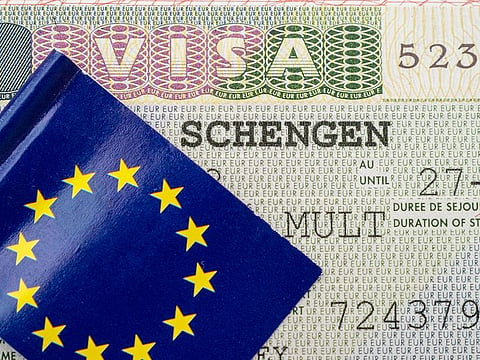Got your Schengen visa? UAE residents can expect queues, checks at many internal borders in Europe
Inspections are random, with a focus on vans, vehicles carrying multiple passengers

As Poland reinstates checkpoints at the German and Lithuanian borders, talks of the beginning of the end of Schengen are growing louder.
However, Poland isn’t the only country that has border checks in place. According to the European Commission, as many as 10 Schengen countries have some form of border controls currently active. This means long queues during busy periods and random document checks for tourists can spring a surprise any time. These check points can be found mainly at road and rail borders, and even some domestic airline routes.
According to Polish Prime Minister Donald Tusk, the controls are temporary and aimed at stopping human trafficking and irregular migration. In a separate meeting, Tomasz Siemoniak, Poland’s minister of interior and administration, assured his Lithuanian counterpart Vladislav Kondratovič that the checks were “not directed against Lithuania or its citizens”.
“We warmly welcome Lithuanian citizens to spend time here as tourists or for business purposes. They will always be welcome in the Republic of Poland,” he said.
Reinstating border controls
Increasing border controls
According to the European Commission, temporary border controls have been implemented in Poland, Slovenia, Italy, Austria, The Netherlands, Denmark, Norway, Sweden, France and Germany.
The checks are in place to curb increasing migratory pressure, threat of terrorist infiltrations, smuggling, as well as perceived political threats.
Slovenia, for instance, cites “serious threats to public policy and internal security posed by a high level of terrorist threats and organised crime, including human smuggling and arms trafficking, the risk of terrorist infiltrations into migratory flows via the Western Balkans” as the reason for the border controls.
Italy, too, cites “continued threat of terrorist infiltrations into migratory flows along the Western Balkan route” as the reason.
France, meanwhile, says “serious threats to public policy, public order, and internal security posed by persistent threats” are the reason behind border checks.
Are border checks permanent?
For foreseeable events, such as sports events, the duration of the border control is limited to 30 days. If required, the border controls can be extended for renewable periods of 30 days, as long as the perceived threat exists. However, the total period cannot exceed six months.
Member states are also required to notify the European Commission and other member countries at least four weeks before the planned reintroduction of border control.
How long will the current border controls last?
The reintroduced border controls are scheduled to last for anything from a month to until the end of the year. Poland’s border controls, for instance, will last until August 5. Checks at Slovenia’s borders will continue until December 21. Those at Italy will last until December 18. Austria, Denmark, Norway and Sweden will have border controls in place until November 11, the Netherlands until December 8, France until October 31 and Germany until September 15.
What about immediate perceived threats?
Where immediate action needs to be taken to adequately respond to a threat, a member state may reintroduce border control for 10 days without prior notification. It should also inform the commission and the member states immediately.
Under exceptional circumstances, the European Commission may also recommend that one or more member states reintroduce border control at all or specific parts of the internal borders.
How are border controls implemented?
Countries set up physical checkpoints at roads leading up to the border. Rail checkpoints are also put in place where applicable. Poland, for instance, has set up 52 road and rail checkpoints along the German border, and 13 along the Lithuanian border.
Similarly, Slovenia has put in place border checks at land borders with Croatia and Hungary.
Checks for international passenger and cargo road transport will be conducted at 24 locations along the Croatia border, along with eight rail traffic locations.
Along the Hungary border, you can find seven such border check points for road traffic, and one location for rail traffic.
Inspections are conducted randomly, with a focus on vans, vehicles carrying multiple passengers, and cars with tinted windows. Officials have emphasised that these are not a return to pre-Schengen barriers. Vehicles will pass through, and only selected cars will be stopped for document and boot checks.
What should travellers do?
Travellers are advised to carry physical copies of their passports, visas, flight tickets, proof of accommodation in the Schengen country they are entering as well as any earlier hotel bookings since the time they entered the Schengen area.
Sign up for the Daily Briefing
Get the latest news and updates straight to your inbox



